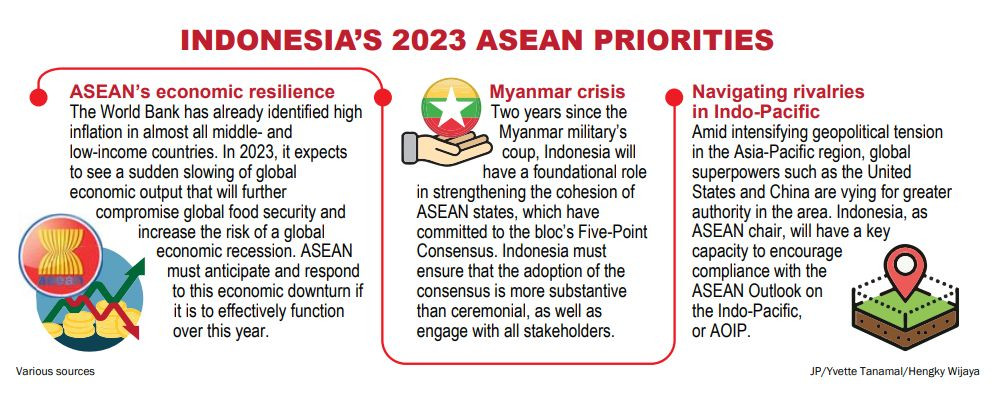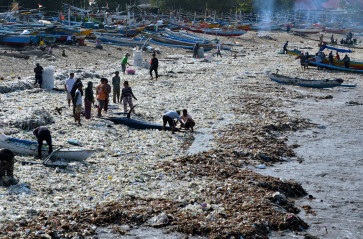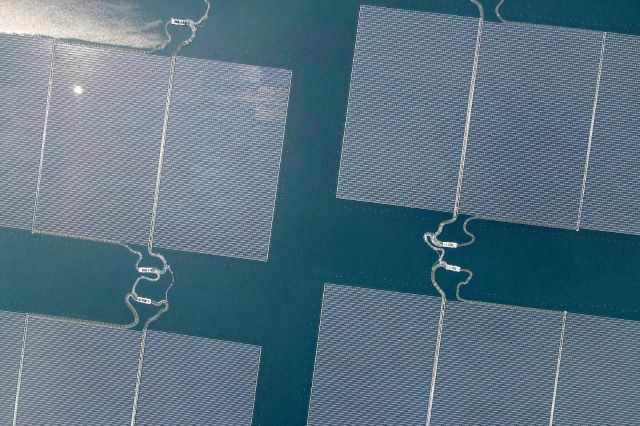Epicentrum of growth: What does it mean for ASEAN and China?
The theme of "ASEAN matters" alongside the "Epicentrum of Growth" is an effort to emphasize economic cooperation as the foundation of ASEAN centrality.
Change text size
Gift Premium Articles
to Anyone

A
fter serving the Group of 20 presidency in 2022, Indonesia, the chair of ASEAN this year, will host the ASEAN Summit in Labuan Bajo, East Nusa Tenggara on May 9-11. Indonesia’s chairmanship upholds the summit’s theme of ASEAN Matters: Epicentrum of Growth.
The chosen theme is interesting since it explicitly offers the Epicentrum of Growth (EoG) as the core of why “ASEAN matters”. Through this, Indonesia conveys the message for ASEAN unity and centrality amid increasing power rivalries around it.
However, what does “EoG” mean? Furthermore, how does this concept of “EoG” provide the basis for ASEAN centrality, especially in terms of its relation with dialog partners, such as China?
The term EoG is often followed by a discussion on how Southeast Asia is an important center of global economic growth. It is true that the ASEAN region, as well as neighboring East Asia, is often described as one of the global engines of growth. Optimism surrounding realizing this theme comes from the fact that ASEAN is an economic powerhouse with a huge labor market.
Based on data from The Economist, it is estimated that in 2023 the gross domestic product (GDP) per capita of the five ASEAN founding countries (excluding Brunei, Cambodia, Laos, Myanmar, Vietnam and Timor-Leste) is in the range of US$3,530 (the Philippines) to $70,350 (Singapore). Indonesia’s GDP per capita is $4,970.
Other interpretations of the EoG put emphasis on the term “epicentrum”, or the center point of something. This interpretation assumes that ASEAN plays the role of center of the architecture of regional economic cooperation. Both interpretations are a description of the situation, not a vision of Indonesia’s presidency.
We are viewing the theme of ASEAN Matters and the EoG as an effort to emphasize economic cooperation as the foundation of the envisioned ASEAN centrality. Economic cooperation is one of ASEAN’s fundamental features, as shown by the goal of ASEAN’s establishment stated in the Bangkok Declaration of 1967, “to accelerate economic growth, social progress and cultural development in the region”.
The success of ASEAN, which consists of countries with various foreign political orientations and political systems, is also underlined by experts in ASEAN’s ability to overcome these political dynamics through prioritizing economic development.
However, today the primacy of economic development is overshadowed by global power rivalries that use economic cooperation initiatives as part of their struggle for influence. This is the actual message of the theme of ASEAN Matters: EoG – ASEAN should become the center of regional (cooperation) architecture despite these rivalries, and this could only be realized if ASEAN maintains its primacy of economic cooperation.
This is in line with Indonesia’s agenda. In responding to the dynamics in the Indo-Pacific region, the Indonesian government has underscored the economic deliverables/priorities in ASEAN’s 2023 economic pillars, through the implementation of the ASEAN’s Outlook on the Indo-Pacific (AOIP). This consists of four economic areas: connectivity, maritime affairs, sustainable development and further economic cooperation.
What are the challenges? There are three points that might serve as challenges but also opportunities for the growth of the community, not only for the present, but also for the near future. These are the post-pandemic recovery, supply chain disruption and the decoupling of United States and China relations.
First, the post-pandemic recovery is still an ongoing issue. Second, supply chain disruption means that ASEAN faces challenges in gaining added value from the global economy and this should be a push to increase capacity building of ASEAN’s private sectors. Third, the decoupling of US and China relations could become both a challenge and an opportunity for ASEAN economies.
While the decoupling could affect the global economy negatively, this also means that there will be efforts by US factories in China to move elsewhere, and Southeast Asia will be among the most logical alternatives. On the other hand, China will also be relying on Southeast Asia as one of its main partners for economic development.
This is reflected by data from The Economist that show the US’ total investment into ASEAN was almost the same as China’s. Moreover, six of the 10 ASEAN countries that have received increasing investment from China are Brunei, Thailand, Cambodia, Laos, Malaysia and Vietnam.
In line with this, as an Epicentrum of Growth, cooperation between ASEAN and its dialog partner China should exhibit intensified common efforts to realize the common goal of a shared community for ASEAN and China, with economic cooperation at the center. This special term was raised by Xi Jinping in 2021 during his commemoration speech for the 30-year anniversary of ASEAN-China relations as dialog partners.
According to data published by the ASEAN Secretariat, the total foreign direct investment (FDI) from mainland China to ASEAN in 2021 was US$13,829 million (accounting for 8.88 percent of the total FDI to ASEAN from non-ASEAN countries). The investment from mainland China was similar to the total $13,468 million (8.65 percent) of FDI in 2021 coming from Hong Kong, Macau and Taiwan.
Meanwhile, FDI coming from the US amounted to $40,249 million (25.85 percent), from Japan $11,876 million (7.62 percent) and South Korea $7,120 million (4.57 percent). Cooperation opportunities between ASEAN as an EoG and China should be prioritized in several sectors such as production and supply chain, clean/green energy as well as the maritime sector.
Hence, the ASEAN community should improve its competitiveness while optimizing cooperation opportunities with China and also with other ASEAN dialog partners. Furthermore, ASEAN should avoid too heavy a dependence on any dialog partner, including reliance on trade products, trade facilities and FDI.
Shofwan Al Banna Choiruzzad is an associate professor of international relations at the University of Indonesia’s School of Social and Political Sciences and executive secretary of the school’s ASEAN Study Center. Adinda N.V. Hutabarat is a sinologist and a Foreign Ministry official. The views expressed are their own.









